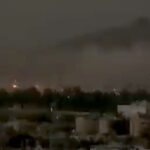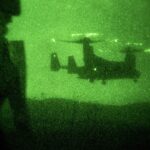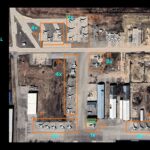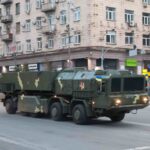UPDATE: The Iranian government has admitted that its armed forces are responsible for the downing of the Ukrainian International Airlines Boeing 737 (flight PS75). Tehran added that the shoot-down was a mistake caused by “human error.”
The Iranian Revolutionary Guards Corps (IRGC) shot down flight PS752 over Tehran, intelligence suggests. Based on SIGINT data collected by US agencies, the U.S., British, Canadian and Iraqi governments were able to confirm what the OSINT circle has been theorizing for the past days:
- A Russian-made Tor M-1/2 SAM system (NATO Reporting name: SA-15 “Gauntlet”) downed the Ukraine International Airlines Boeing 737 shortly after the aircraft took off from Tehran – Imam Khomeini International Airport at 6.12 AM (local time) on Jan. 8, 2020. All 176 passengers died. The shoot-down was probably unintentional, but the theory of deliberate action cannot be excluded.
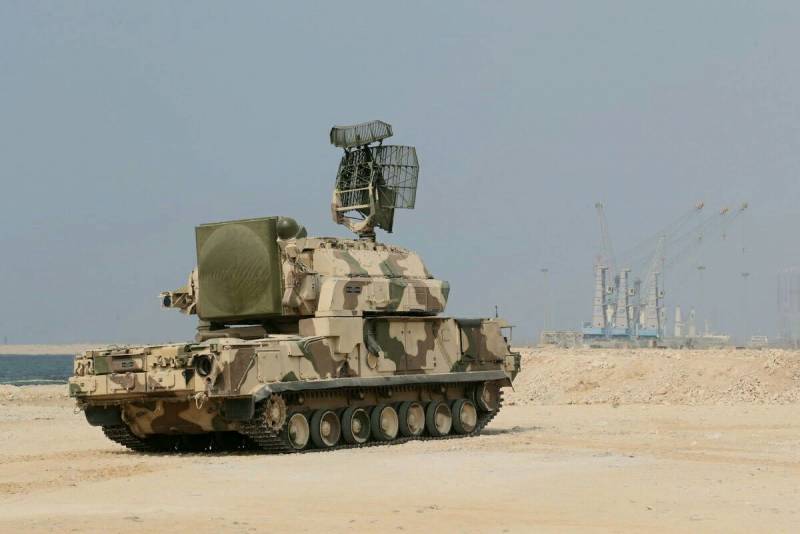
Iranian Tor-M1/2 (SA-15)
- The IRGC-Aerospace Force (AF) fields numerous Tor M-1/2s for point air defense of sensitive facilities and long-range SAMs.
- The aviation incident occurred five hours after the IRGC-AF launched a missile barrage at Iraqi installations hosting Coalition/ U.S. forces. It is very likely that the IRGC mistook/misidentified the PS752 for a US aircraft especially as Iran was tensely expecting an American retaliation for the earlier attack in Iraq.
- Two photos showing the debris of a Tor M1/2’s (SA-15) surface-to- air missile (SAM) proximity fuse/”seeker” close to the crash site. Visual forensics certify the resemblance between the debris and the seeker section of a SA-15 SAM.

Debris of SA-15 SAM near PS752 crash site via T-Intelligence
- A video showing an aerial detonation in the immediate proximity of flight PS752 while airborne. The “contact” is consistent with SAM interceptions.
We are analyzing this new video supposedly showing a mid-air explosion. By our initial estimation, the video shows an apartment block in western Parand (35.489414, 50.906917), facing northeast. This perspective is directed approximately towards the known trajectory of #PS752. pic.twitter.com/nDvjRIkFU4
— Bellingcat (@bellingcat) January 9, 2020
*This is likely the second SAM launched (per “2-for-1” SAM engagement doctrine/ two missiles fired for one target). The explosion caused by the first SAM probably attracted everyone’s attention, hence why people started filming and caught the second SAM on tape.
- Aircraft crash site is close to a known Tor M-1/2 deployment (within kinematic range).
- As opposed to the Iranian position, the Boeing 737-aircraft did not attempt to return to the airport. The pilots instantly lost communications with the tower and did not send an SOS signal. Flight path post-contact rather suggests the loss of flight control mechanics than a return-to-base.
- Three intelligence sources (two US and one Iraqi) told major news outlets that the U.S. Space-Based Infrared System (SBIRS) satellites picked up radio-emission spikes, indicating radar activity, and detected two surface-to-air missile (SAM) launches shortly before the plane crashed. The U.S. CIA, NGA and DIA aero-space assets were virtually certain focused on Iran to gather early-warning and telemetry data on possible missile launches.
- Iranian officials blamed the accident on a technical malfunction such as a critical engine failure and dismissed the theory that its missiles brought the plane done. However, Iranian officials said they will not provide the plane’s “block box” to the other countries involved in the investigation. The head of Iran’s Civil Aviation claimed that the plane would have “dropped” from the sky if hit by a missile, while video evidence shows the aircraft ablaze and descending before exploding.
- However, THAT IS INCORRECT. Point air defense systems such as Tor M-1/2 use proximity fuze, designed to detonate the SAM when entering the target’s “kill-zone”, which increases interception chances, instead of a hit-to-kill kinematic solution (as other SAM systems use). Once detonated, the SAM’s warhead inflicts structural damage with the intent to destroy the target.
- This is consistent with the PS752’s last minutes – ablaze, instantly losing control and radio-contact – before exploding. In addition, the PS752’s 8,000 feet altitude was within the Tor M-1/s’s engagement envelope.
European security officials agree with the US assessment. The Canadian government has already amended its official political position to include the latest US-supplied intelligence.
- Russia Bombs Maternity Ward & Children’s Hospital in Mariupol As Part of Siege - 10 March 2022
- T-Intell’s OSINT Training Marks One Year Anniversary - 18 November 2021
- IS-K Never Left the Battlefield - 27 August 2021



